#Commodore plus 4
Explore tagged Tumblr posts
Text

Commodore Plus/4 - 1984
source: classictech
#Commodore plus 4#Commodore#retro tech#retro computing#retro ads#vintage computing#vintage electronics#retrowave#vaporwave#retrocore#techcore
375 notes
·
View notes
Text
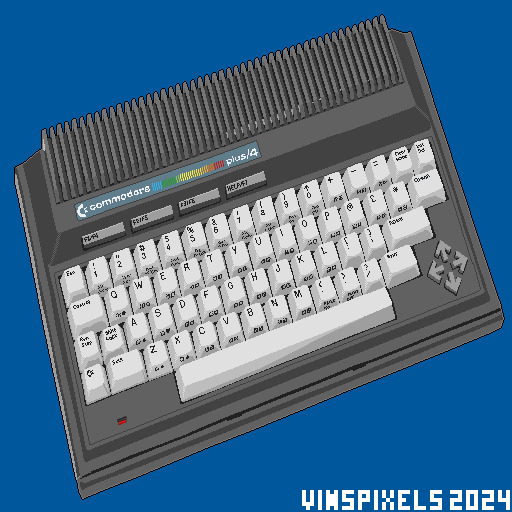
Commodore Plus/4
13 notes
·
View notes
Text
Codemasters early conversion entries added
Thanks to Adam Markey for highlighting a conversions call from Codemasters in April 1987, we've created a set of new entries. Various conversions all currently lost for #ZXSpectrum, #Atari800, #MSX and #Commodore16/#Plus4:
#unreleased#retro#prototype#gtw#commodore#lost games#unreleased games#cancelled games#msx#zx spectrum#Atari 800#Commodore 16#Commodore Plus 4
0 notes
Text


Commodore Plus/4 - The Tale
45 notes
·
View notes
Note
Top 5 worse computers from the 80s
While I'm sure someone could come up with a more definitive well-curated list, here's what I came up with on a whim: Sinclair ZX-81 The ZX-80 was a good, inexpensive step forward for the burgeoning UK computer market. Its successor, the ZX-81, tripped and fell rather than do anything beyond streamlining it for mass production. A real pain in the ass to type on, and notoriously flaky to do any serious work on. Localized in the US as the Timex-Sinclair 1000, it was too weak to really compete with the American market. British users seem to like them but I'd chalk up most of that to nostalgia goggles.
Apple III Apple tried and failed to make a business machine, and Jobs got his way a bit too much, and it overheated alot because he mandated that it couldn't have a fan. Ultimately, it confused people and was surpassed by better Apple II's. A weird footnote in Apple failures.
IBM PCjr The answer to a question that nobody asked. Crappy wireless keyboard, intended to be bolted to your home television. Cartridges? On an IBM? WTF is that? The expansion options are hot garbage. Eventually it was upstaged by the Tandy 1000 at its own game. Just get a PC XT. Or a Tandy.
Coleco Adam Likes to erase its own tapes if you leave them in the drive on power-up due to an electrical surge it shoves through the tape mechanism. The main system power supply is integrated into the printer, so you NEED the chonky printer to be plugged in for it to work. Has those weird phone pad + joystick hybrid controllers. Just get a ColecoVision to play your cartridge games.
Commodore Plus/4 I was going to take a stab at the MAX Machine, but Commodore did worse with the whole concept of the Plus/4. This thing was too cheap for its own good, and went in a completely bonkers direction at the behest of Jack Tramiel. It's supposed to be a cheap business machine to eat the ZX Spectrum's lunch. Why go after the little guy from the UK market? Who knows. Lame rubber chiclet keyboard, totally incompatible with existing Commodore software and most peripherals, and having 121 colors can't save it from being a dumb idea. Apparently it was a hit in eastern Europe.
Remember, pretty much every system has its fanclub, regardless of how flawed, underpowered, or limited a platform it is. So while I personally don't care for any of these machines, if you're mad at me for taking a pot shot at your favorite, do keep in mind that my favorite computer of all time is the VIC-20. You know, the one that most Commodore enthusiasts ignore for only having 5K of RAM having only 8 foreground colors, only 22 columns of screen resolution, and just not being a C64.
24 notes
·
View notes
Photo

Commando 🏢 Capcom 📅 1985 🖥 Acorn Electron, Amiga, Amstrad CPC, Apple II, Arcade, Atari 2600, Atari 7800, Atari ST, BBC Microcomputer System, Commodore 16... #videogames
#Acorn Electron#Amiga#Amstrad CPC#Apple II#Arcade#Atari 2600#Atari 7800#Atari ST#BBC Microcomputer System#Commodore 16#Commodore 64#Commodore Plus/4#DOS#FM-7#Intellivision#MSX#NES#PC-8800 Series#Wii#ZX Spectrum
5 notes
·
View notes
Text


Icicle Works (Commodore Plus/4)
Developed/Published by: Doug Turner / Commodore Released: 1985 Completed: n/a Completion: Completed a few toys, but lost in Santa’s snowy labyrinth…
Working my way through Christmas games in an (as near as records allow) chronological fashion has been a bit of a challenge this year! We’ve had some highs for sure (discovering Hanan Samara) but some absurd lows (all of Christmas Crackers.) I think next year I’m going to actually have to do some proper legwork and try and sort out what was actually released for (at least) the BBC Micro and ZX Spectrum that can be classed as a commercially released Christmas game to make me feel satisfied I’m doing my due diligence. I’m aware that literally no one cares about this, but apparently it’s just what my brain does, and there are too many Christmas themed type-ins, and World of Spectrum doesn’t let you search by theme, so it’s going to take some time.
In lieu of doing that though, onward with the next game I can confirm as Christmassy; Doug Turner’s Icicle Works for Commodore’s generally unloved Plus/4.
The Plus/4 is a weird machine. I’m not sure there’s been a bit of industrial design in home computers that looks as much like it should be on a spaceship that an Alien is murdering the crew on (this is a good thing) but it’s got that bizarre problem that so many hardware manufacturers made then–it’s a Commodore, but it’s not compatible with the C64 at all nor a meaningful upgrade to it, so… why buy it? And more than that… why make games for it?
Few people did, and that’s probably why Icicle Works is so well remembered in the machine’s surprisingly… existing community (it turns out it was popular in Hungary.) You play as Santa, who has come back from holiday and (I assume) discovered that his workshop has exploded, leaving parts of presents scattered around in the snow, requiring him to dig through it all while avoiding enraged penguins, polar bears and ice water.
It’s very much a Boulder Dash clone, which makes it quite strange that it’s called “Icicle Works” considering there aren’t any icicles in it. It’s actually named after the band, who are probably best known for the single Birds Fly (Whisper to a Scream) which… I might have heard before? It was used in Stranger Things, actually, so I’ve definitely heard it, although I absolutely couldn’t have named the band until I researched this. They were named for a Frederik Poh short story, “The Day the Icicle Works Closed” and I must say I think that if Turner was going to take inspiration, he should have looked at that instead and gone for “The Day Santa’s Workshop Exploded.”
Anyway. Boulder Dash is one of those game designs that it sort of feels like you couldn’t escape at one point but which no one even thinks about now–although they’re still making them–and interestingly it’s actually not a series I have much familiarity with. I don’t think I even played Repton on the BBC Micro or anything.
If you’re unfamiliar with Boulder Dash, it follows on from the likes of Dig Dug or Mr. Do by heavily featuring the mechanic of rocks falling down the screen, but for some reason it’s the one I most fixate on the odd perspective of. Are you viewing the action side-on? Or is it top-down and we accept that rocks fall because the screen is vertical? Notably in Repton the ritual character does a weird sort of monkey climb when going up and down, but in Boulder Dash it sort of looks more like it’s top-down. Dig Dug was definitely side-on, and Taizo Hori did always walk on a wall no matter what direction he was moving, so that one almost made sense.
Er… this is getting away from me, here. All that actually matters is that in Boulder Dash you’re playing through levels trying to collect all of the diamonds without being squished by falling rocks or other hazards, hazards that you generally create by your own digging.
Icicle Works, which I think is definitely top down even if that doesn’t exactly make sense (you're actually on... a mountainside! that's it) expands this design into a sixteen level map. On each multi-screen level you have to collect all of the presents and then you’re able to select one of the doors to go to another level, but it’s completely non-linear–you can go from level 1 to level 6, and and even go back to level 1 (where the level will stay completed for you.) It’s a bit like Ancipital, if less idiosyncratically inventive.
What it is, though, is unbelievably fucking hard. So hard that it’s really quite beyond me, and feels like a game for serious Boulder Dash players. From basically the second level Icicle Works requires pro Boulder Dash strategies: in certain screens, you need to go as fast as possible to avoid being trapped by flowing water. In others, you need to drop snowballs in exactly the right place to make a path or to kill enemies to complete it. You can’t see the entire level you’re on and you start with just three lives, so to even start to learn the game you’ll need to play it from the start over and over–and there’s a harsh time limit on every screen, and most screens require you pick up so many presents you really have to be playing almost a perfect racers line.
Yes, Icicle Works is a “pressure puzzle” if not a “pressure puzzle platformer” and it’s… aggressive. I’d be surprised it’s so fondly remembered but for the fact that the Plus/4 had almost no games, and even saying that it’s so brutal that I’m impressed anyone stuck with it. It does play well enough–it’s tile-based movement, but it’s snappy, and I honestly did play this for quite a while before giving up in, honestly, frustration. With a map and save states, I’d say that if you really love Boulder Dash-style games this would be well worth playing, but it doesn’t have an ending, which means you’ll be stuck with only your sense of satisfaction for having beaten it, and you’ll have used a map and save states, so you might not be that satisfied to be honest.
Icicle Works’ biggest flaw for me though is that it doesn’t really feel that Christmassy! Sure, you’re playing a wee pixelated Santa, but the music is jaunty in a really non-festive fashion, and the name Icicle Works is just wrong. This is a perfectly fine game for the era (and the machine) but I think I’d probably like it more if it actually was called “The Day Santa’s Workshop Exploded.”
Will I ever play it again? I really copped out on this one because it’s so bloody hard; I just wasn’t really enjoying working out the puzzle of each level because, as I’ve described, I don’t like puzzles under pressure. So no.
Final Thought: Something I find really charming is that over 30 years later in 2020 Doug Turner would release an official “sequel” of sorts to this and his other game, Prospector Pete, only on the bloody Plus/4 again! So I suspect if you really want to play a Plus/4 Boulder Dash-me-do you’re better off with The Pit.
Sadly, Doug Turner passed away in 2022, just a couple of years after releasing it–it seems he was a beloved and active member of the Plus/4 community, and took great pleasure that people were still interested and playing his games.So RIP, Doug, thanks for Icicle Works… even if it is too bloody hard.
Every Game I’ve Finished 14>24 is OUT NOW! You can pick it up in paperback, kindle, or epub/pdf. You can also support Every Game I’ve Finished on ko-fi! You can pick up digital copies of exp., a zine featuring all-exclusive writing at my shop, or join as a supporter at just $1 a month and get articles like this a week early.
#gaming#video games#games#txt#text#review#commodore plus/4#plus/4#icicle works#Doug turner#boulder dash#essay#1985
2 notes
·
View notes
Text
It's unfortunate I loathe Johnny Depp because the first 3 Pirates of the Caribbean movies REALLY hold up
#pirates of the caribbean#films#Personal#Elizabeth Swann I'd die 4 u#she was SO smart#like even in the first movie before she learned to fight#she got herself and Jack Sparrow off that fucking island#she literally manipulated Commodore Norrington into saving Will!#by saying she'd marry him#plus Keira Knightley is so cool#a genius and a lady!
18 notes
·
View notes
Text
2D-s Nintendo korszak
Az Animagazinba írtam néhány éve egy cikksorozatot a Nintendóról, és annak történelméről. Igyekeztem a lehető legrészletesebben kielemezni az előzményeket, a Commodore számítógépről, a Nintendo kezdeti nehézségeit, a videojátékok megítélésének különbségét Japánban és nyugaton, a marketinget. Nintendo Entertainment System és Super Nintendo egy helyen! Szó lesz a PlayStation megjelenésének…
0 notes
Text
RetroGaming Shorts Part 101 - Lunar Landing
Lunar Landing 1985 (Commodore 16/Plus4)
This hybrid of Frogger and Lunar Rescue is interesting to me because the obstacles move in orbital arcs rather than straight left-right. The arcs are jerky due to being restricted to 8x8 char tile movements, but the overall result is smooth enough.
youtube
1 note
·
View note
Text
Tag 11: Commodore Computer - von Brotkästen und Freundinnen
Meine Hommage an Commodore und seine erfolgreichen Computer. Als Sinclair und Atari ST Fanboy stand ich immer auf der anderen Seite der Macht. Der Brotkasten und die Freundin waren aber die besten Homecomputer ihrer Zeit
Der elfte Beitrag in meiner Reihe von Beiträgen zur Neugestaltung der Ausstellung in meinem Computermuseum. Heute und an weiteren 22 Tagen stelle ich die Zusammenstellung meiner Ausstellungsstücke vor. Commodore Computer waren in Deutschland ganz groß. Der C64 und der Amiga waren Millionenseller überall in der Welt. In Braunschweig wurden viele dieser Computer gebaut. Die Geschichte von Commodore…

View On WordPress
0 notes
Text
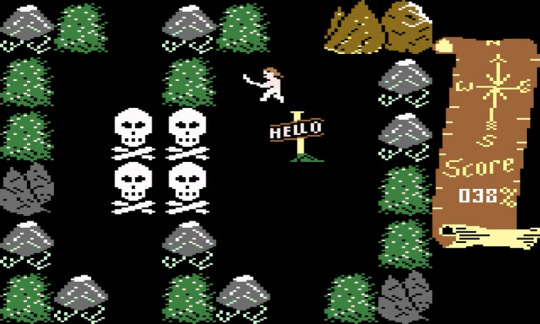
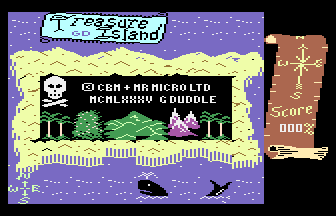
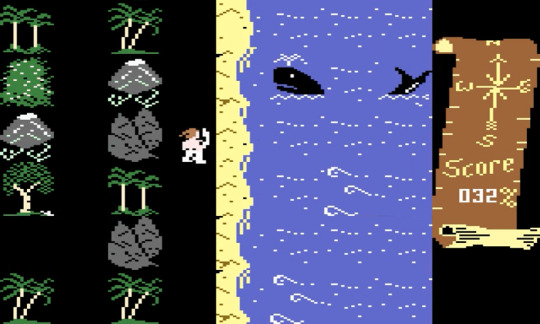

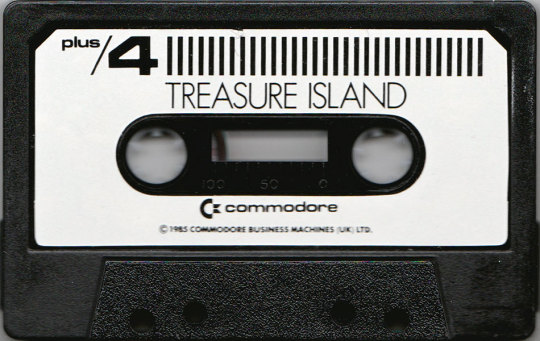
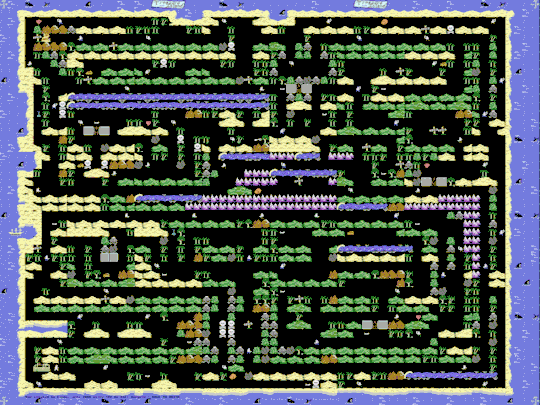
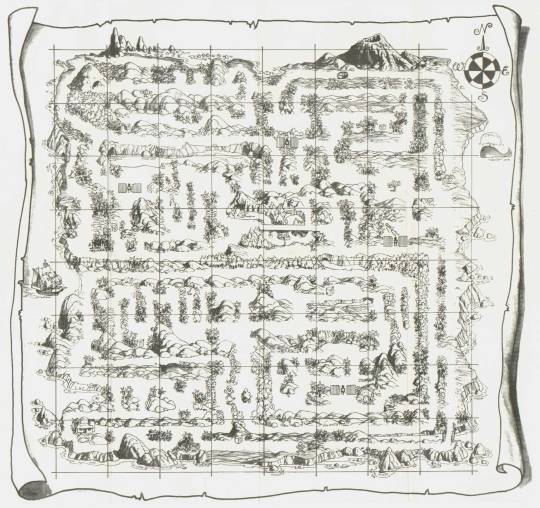
Treasure Island - Mr. Micro Ltd. - Commodore Plus/4 - 1985
source: Commodore Plus/4 World
#Treasure Island#Commodore Plus/4#Commodore#pc games#retro gaming#retro games#video games#gaming#retro tech#retrocore#techcore#c64#commodore 64
108 notes
·
View notes
Text
Day 5
False + pixel art (Commodore 64 limitations)

For False I made pixel art following Commodore 64 limitations!
To read more about pixel art and see what Commodore 64 limitations are, please continue below the cut.
(( Donate to Gamer's Outreach for HaDM ))
Pixel art is digital art where images are built using only pixels as their building blocks. Nowadays pixel art pieces can be massive and complex, but historically pixel art had strict limitations on size, color, and arrangement that were dependent on the software being used. Today some pixel artists still follow historical limitations as an aesthetic choice and personal challenge.
For this piece I followed the pixel limitations from the Commodore 64, a computer model from the 1980s. Specifically, I followed the Multi Color Mode limitations, which are:
1) 160 x 200 pixel size with each pixel character being 2 squares long and 1 square tall (so the image size in square pixels would be 320 x 200)
2) Within each 4 x 8 area (8 x 8 if we were using square pixels) only up to 3 colors, plus the background color (black), can be used.
3) The only colors in the image are 16 predefined colors from the Commodore 64 color palette.
Since thesec are pixel limitations from the 80s, I also designed False to resemble characters from the 1986 anime Saint Seiya.
#hermitaday#turns out I really enjoy doing pixel art with old console limitations#I've never done Commodore 64 pixel art before so I might have made some mistakes but I did my best#hopefully I didn't misunderstand the instructions I was following#falsesymmetry#hermitcraft#hermitcraft fanart#falsesymmetry fanart
75 notes
·
View notes
Text
Nos, leadtuk a nevezést a Commodore Plus/4 játékfejlesztői versenyre a lányommal, így tegnap estétől hivatalosan is programozonak számít a gyermek :)
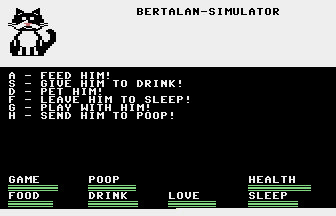
Jó, hát nem egy Battery 2, nem is ez volt a cél, de first release-nek tökéletes :)
47 notes
·
View notes
Text
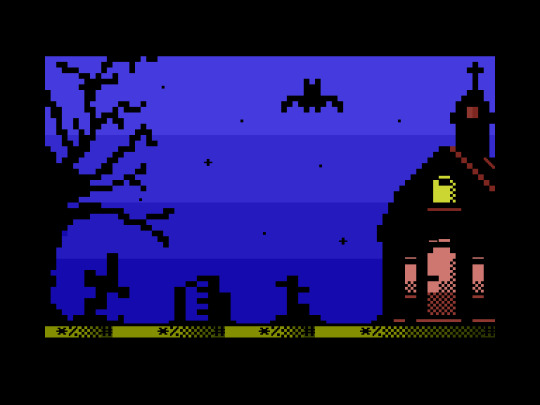
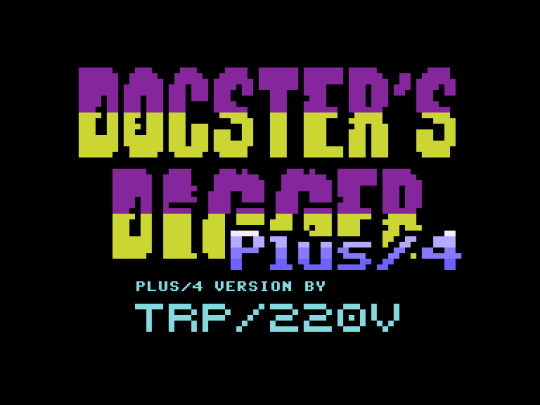

Commodore Plus/4 - Docster's Digger trailer
11 notes
·
View notes
Note
If the Commodore 64 is great, where is the Commodore 65?
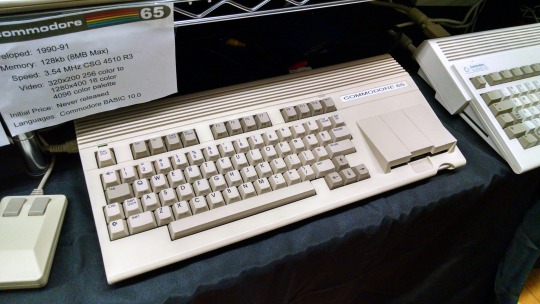
It sits in the pile with the rest of history's pre-production computers that never made it. It's been awhile since I went on a Commodore 65 rant...
The successor to the C64 is the C128, arguably the pinnacle of 8-bit computers. It has 3 modes: native C128 mode with 2MHz 8502, backwards compatible C64 mode, and CP/M mode using a 4MHz Z80. Dual video output in 40-column mode with sprites plus a second output in 80-column mode. Feature-rich BASIC, built in ROM monitor, numpad, 128K of RAM, and of course a SID chip. For 1985, it was one of the last hurrahs of 8-bit computing that wasn't meant to be a budget/bargain bin option.
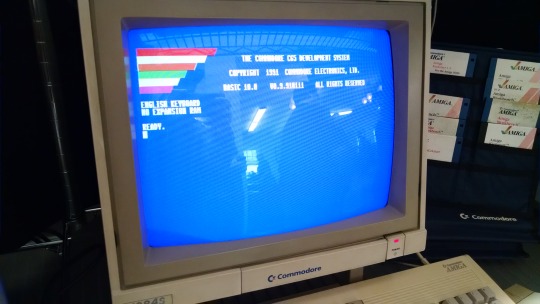
For the Amiga was taking center stage at Commodore -- the 16-bit age is here! And its initial market performance wasn't great, they were having a hard time selling its advanced capabilities. The Amiga platform took time to really build up momentum square in the face of the rising dominance of the IBM PC compatible. And the Amiga lost (don't tell the hardcore Amiga fanboys, they're still in denial).
However, before Commodore went bankrupt in '94, someone planned and designed another successor to the C64. It was supposed to be backwards compatible with C64, while also evolving on that lineage, moving to a CSG 4510 R3 at 3.54MHz (a fancy CMOS 6502 variant based on a subprocessor out of an Amiga serial port card). 128K of RAM (again) supposedly expandable to 1MB, 256X more colors, higher resolution, integrated 3½" floppy not unlike the 1581. Bitplane modes, DAT modes, Blitter modes -- all stuff that at one time was a big deal for rapid graphics operations, but nothing that an Amiga couldn't already do (if you're a C65 expert who isn't mad at me yet, feel free to correct me here).
The problem is that nobody wanted this.
Sure, Apple had released the IIgs in 1986, but that had both the backwards compatibility of an Apple II and a 16-bit 65C816 processor -- not some half-baked 6502 on gas station pills. Plus, by the time the C65 was in heavy development it was 1991. Way too late for the rapidly evolving landscape of the consumer computer market. It would be cancelled later that same year.
I realize that Commodore was also still selling the C64 well into 1994 when they closed up shop, but that was more of a desperation measure to keep cash flowing, even if it was way behind the curve by that point (remember, when the C64 was new it was a powerful, affordable machine for 1982). It was free money on an established product that was cheap to make, whereas the C65 would have been this new and expensive machine to produce and sell that would have been obsolete from the first day it hit store shelves. Never mind the dismal state of Commodore's marketing team post-Tramiel.

Internally, the guy working on the C65 was someone off in the corner who didn't work well with others while 3rd generation Amiga development was underway. The other engineers didn't have much faith in the idea.
The C65 has acquired a hype of "the machine that totally would have saved Commodore, guise!!!!1!11!!!111" -- saved nothing. If you want better what-if's from Commodore, you need to look to the C900 series UNIX machine, or the CLCD. Unlike those machines which only have a handful of surviving examples (like 3 or 4 CLCDs?), the C65 had several hundred, possibly as many as 2000 pre-production units made and sent out to software development houses. However many got out there, no software appears to have surfaced, and only a handful of complete examples of a C65 have entered the hands of collectors. Meaning if you have one, it's probably buggy and you have no software to run on it. Thus, what experience are you recapturing? Vaporware?
The myth of the C65 and what could have been persists nonetheless. I'm aware of 3 modern projects that have tried to take the throne from the Commodore 64, doing many things that sound similar to the Commodore 65.
The Foenix Retro Systems F256K:

The 8-Bit Guy's Commander X16
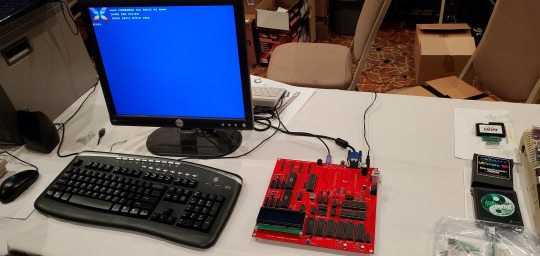
The MEGA65 (not my picture)
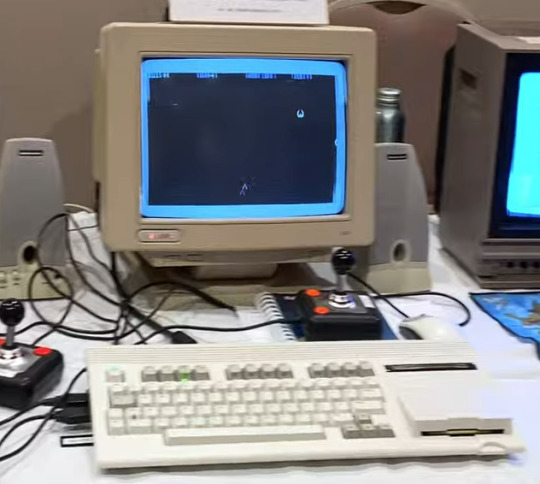
The last of which is an incredibly faithful open-source visual copy of the C65, where as the other projects are one-off's by dedicated individuals (and when referring to the X16, I don't mean David Murray as he's not the one doing the major design work).
I don't mean to belittle the effort people have put forth into such complicated projects, it's just not what I would have built. In 2019, I had the opportunity to meet the 8-Bit Guy and see the early X16 prototype. I didn't really see the appeal, and neither did David see the appeal of my homebrew, the Cactus.
Build your own computer, build a replica computer. I encourage you to build what you want, it can be a rewarding experience. Just remember that the C65 was probably never going to dig Commodore out of the financial hole they had dug for themselves.
262 notes
·
View notes